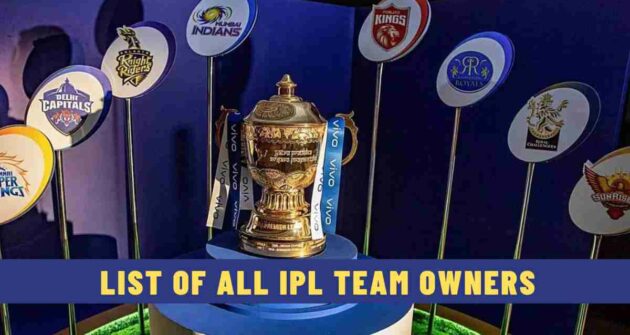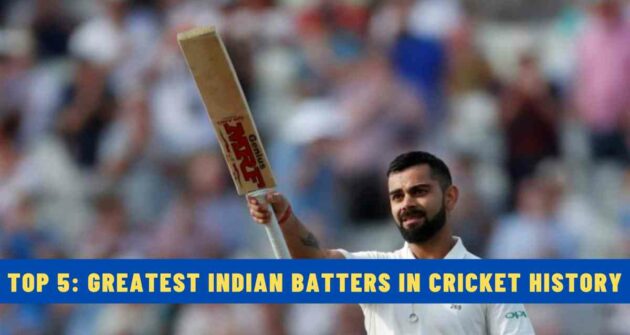Cricket has been played for several centuries, and since then, the sport has evolved to a large extent. Apart from the advancement in gameplay, several terms have been added to the sport that are used on a regular basis.
We are sure you must have heard some of them while watching or playing cricket. However, these cricketing terms might be hard to get if you are a complete beginner in the sport. But don’t worry, we have got you covered.
In this article, we’ll list all the basic cricketing terms that you need to know.
Cricket Glossary
All-rounder: A player who contributes significantly in both departments, i.e., batting and bowling. Such players are great assets for any team, as they provide a cushion with both bat and ball.
Appeal: Players from the fielding side ask the umpire to adjudge a batter out by shouting howzat. If the players from the fielding side don’t appeal, the umpire can’t rule a batter out, even if the batter might be out.
Asking Rate or Required Run Rate: It indicates the runs needed to be scored by a team per over while chasing a target.
Bail: The 2 small wooden pieces that are placed on top of the stumps.
Ball: A round-shaped leather ball used to deliver to batters. There are 3 types of balls — red and pink for Test cricket and white for limited-overs cricket (ODI and T20).
Ball Tampering: This comes under unfair play when players try to change the condition of the ball by scuffing it or applying prohibited substances to its surface.
Bat: The equipment used by batters to smash the ball. The bat is made of a piece of willow.
Batter: A player from the batting side who is batting on the crease, trying to score runs.
Batting Average: It is a metric to determine the average number of runs scored by a batter per innings. To calculate the batting average, divide the batter’s total runs by the number of batter’s dismissals.
Batting Strike Rate: Another metric to define how fast a batter scores runs. To calculate the batting strike rate, divide the total runs scored by the number of balls faced by a batter and then multiply it by 100.
Beamer: A ball that passes around head height without pitching on the surface. Such delivery is signalled as no ball by umpires. If a bowler bowls 2 beamers, they are suspended from bowling in the remaining innings.
Bouncer: A short-pitched delivery that passes at the chest or head height of the batter. Bowlers are allowed to bowl a certain number of bouncers per over.
Boundary: This is the perimeter of the field, which is marked by a rope. The term is also used when the batter smashes the ball rolling towards the ropes, scoring 4 runs, or the ball passes above it, scoring 6 runs.
Bowler: The player who specialises in bowling, either pace or spin.
Bowling Average: A metric to determine the number of runs a bowler concedes before picking up a wicket. To calculate the bowling average, divide the total runs conceded by the number of wickets taken by the bowler.
Bowling Strike Rate: This metric helps in ascertaining the average number of balls bowled by a bowler to pick up a wicket. To calculate the bowling strike rate, divide the total balls bowled by the bowler by the number of wickets taken.
Bye: When batters score runs, though the ball doesn’t make any contact with the bat, pad, or body of the striker. This type of run comes under extras.
Carry the Bat: This term belongs only to the opening batters who remain not out at the end of the completed innings, while the other 10 batters have been dismissed.
Century or Hundred: When a batter scores 100 runs in an innings. It is considered a significant milestone in a player’s career.
Death Overs: Usually, there are the last few overs bowled in an innings of a limited-over match. For instance, the last 10 overs in an ODI innings and the last 4 overs in a T20 innings are referred to as death overs.
Duckworth-Lewis-Stern (DLS) Method: A mathematical method to determine the revised target for the team batting second when rain or bad weather interrupts the match.
Decision Review System (DRS): A technology employed to help match officials make the right decisions after umpires or players want to review an on-field call.
Duck: When a batter gets out on zero, it is referred to as a duck. There are several types of ducks, like the golden duck, diamond duck, or laughing duck.
Economy Rate: The metric used to determine the average number of runs conceded by a bowler per over.
Extras: The additional runs that are not scored by batters but are recorded in the batting team’s scorecard.
Free Hit: When a bowler bowls a no ball, the batting team gets a free hit on the next delivery. A batter can’t be dismissed on a free hit by any means other than run out, hit the ball twice, or obstructing the field.
Fifty or Half-Century: When a batter reaches the 50-run mark in an innings.
Hat-trick: When a bowler dismisses 3 batters on 3 consecutive deliveries in a single match.
Hit Wicket: A batter is given out when they accidentally hit the stumps, either with the bat or their body parts.
Innings Declaration: This means the captain of the batting side wants to close their innings after scoring enough runs on the board. The innings declaration can be used only in First-Class or Test cricket.
Leg-Before Wicket (LBW): If the ball pitches in line of the stumps and hits a body part of the batter except for the hand holding the bat, the batter is given out LBW.
Leg Spin: A type of spin delivery that turns from the leg side to the off side for a right-hand batter after pitching on the surface.
Maiden Over: An over when a bowler doesn’t concede a single run, even the extras such as wides and no-balls.
Mankad / Run Out at Non-Strikers End: The act of running out the non-striker when they leave their crease early, even before the ball comes into play. This is a controversial dismissal and happens quite rarely.
Nervous Nineties: The phase when a batter is batting between 90 and 99 runs. Since they are approaching their century milestone, that might put them under pressure.
Nightwatchman: Used only in longer formats, a lower-order batter, usually a bowler, is promoted up the order when the day’s play is coming to a close.
No Ball: As the name suggests, this delivery isn’t counted, as the bowler must have overstepped or bowled a waist-high full toss.
Off Spin: The stock delivery bowled by an off spinner that turns from off side to leg side after pitching on the surface.
Powerplay Overs: An ODI match has 3 powerplay phases: 1-10 overs, 11-40 overs, and 41-50 overs. In the first phase, only 2 fielders are allowed outside the circle, and the number increases to 4 and 5 in the subsequent phases. In T20 matches, the first 6 overs are part of the powerplay, with 2 fielders placed outside the circle.
Run Out: The act of dismissing a batter when they are outside their batting crease while taking a run.
Super Over: When a limited overs match ends in a tie, a Super Over is used to determine the winner of the match.
Swing Bowling: A type of bowling wherein a bowler specialises in swinging the ball in the air. There are 3 types of swings: inswing, outswing, and reverse swing.
Wide: A delivery that passes outside the wide guideline or the one that’s way outside the reach of the batter.
Yorker: A delivery that pitches close to the stumps or a batter’s toes to catch them off guard.
Read Next | Ten Yorker Ball Specialists in Cricket











